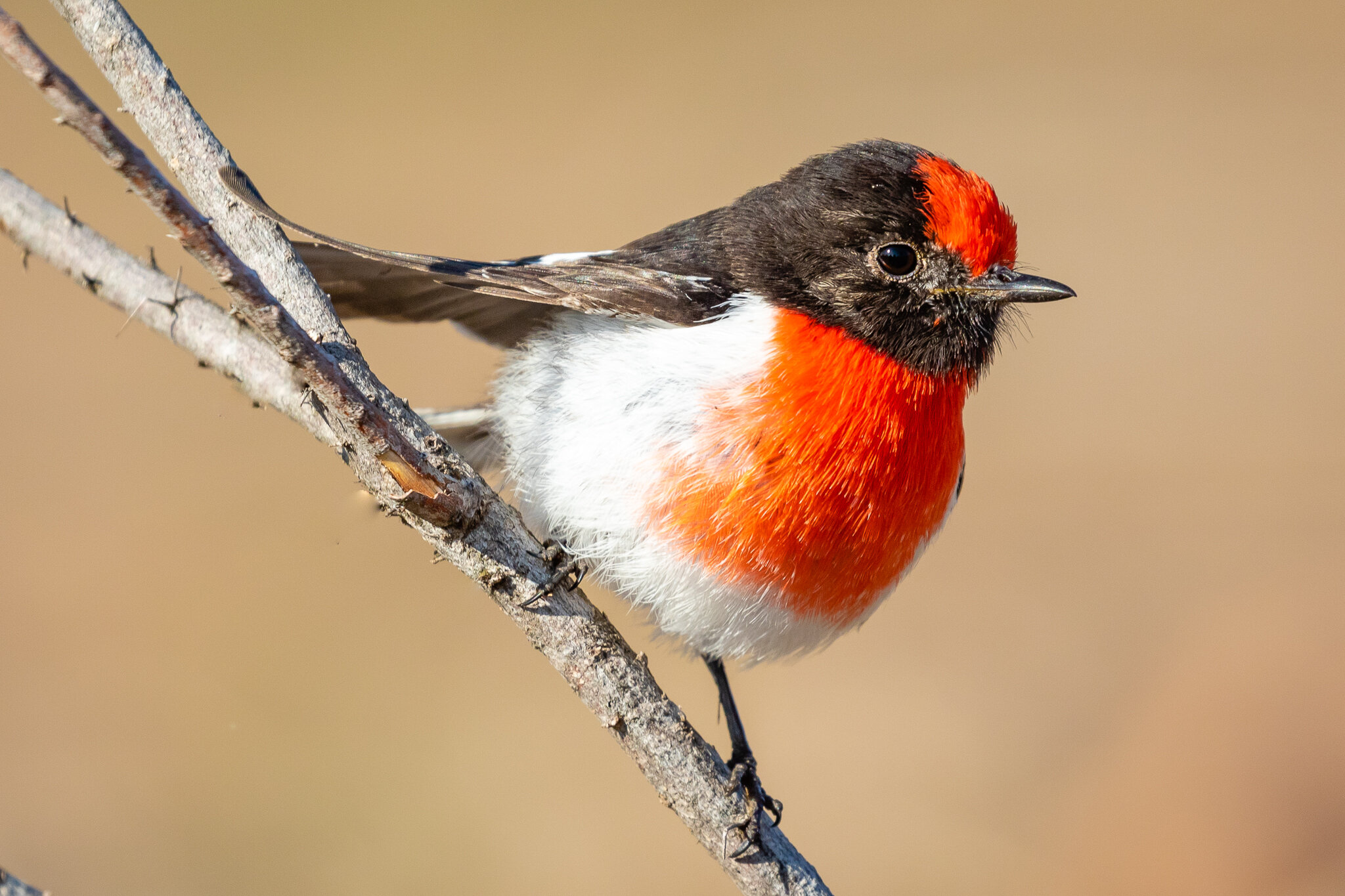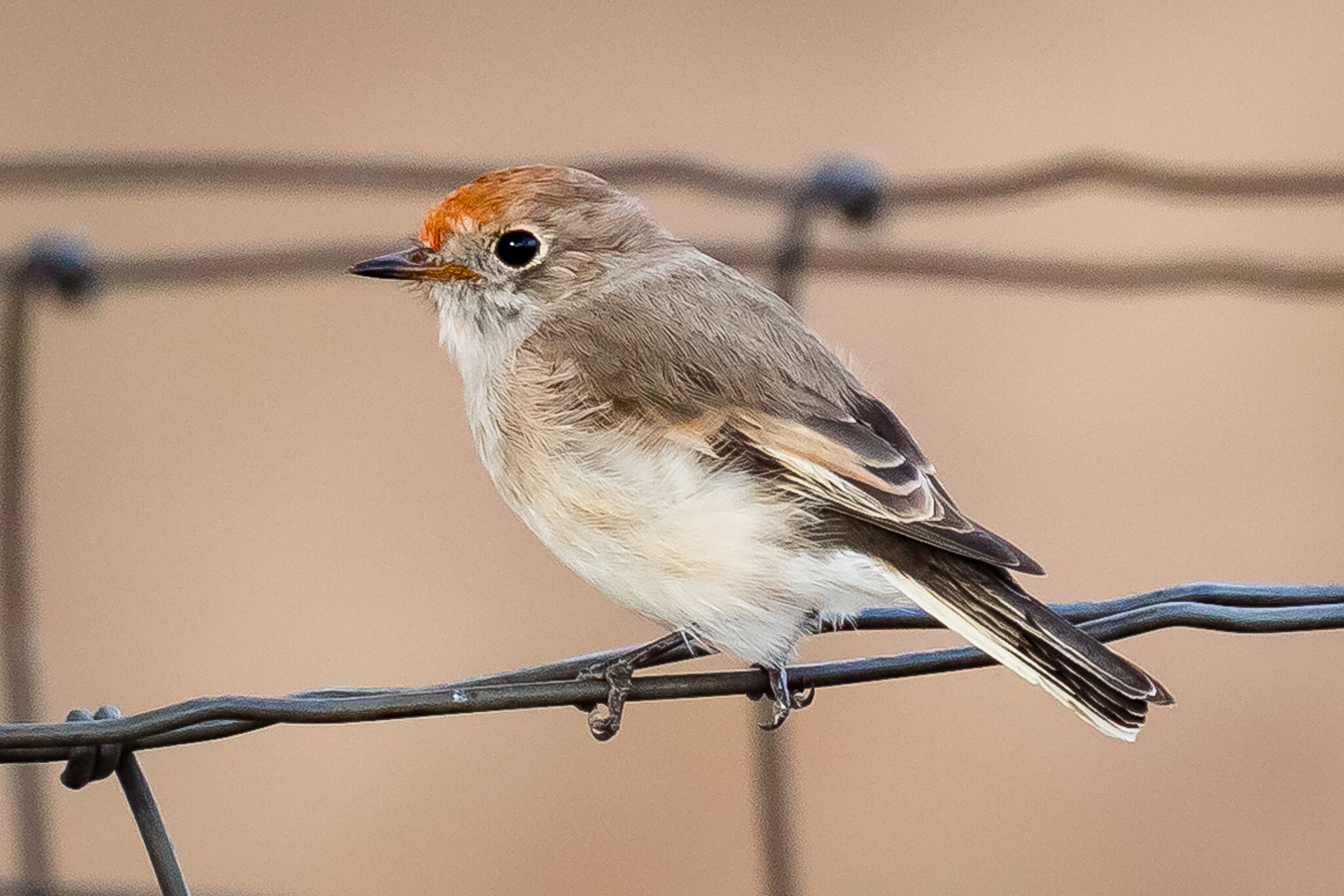Australian Robins
The Petroicidae family is an Australasian family with 22 Australian members, including Robins, Scrub-robins and Flycatchers. Another 30 of this family live in New Guinea, New Zealand and surrounding islands. The Petroicidae are only distantly related to European robins and to Asian flycatchers.
Australian Robins are compact birds with a short straight bill and feed mainly on insects, occasionally supplemented with seeds. They are often seen perching on low branches and fence posts, feeding off the ground.
Photo: The male Red-capped Robin (12 cm). Red-capped Robins inhabit most of the Australian continent south of the tropics, favouring dryer woodlands. Feeds on insects and small invertebrates.
This female Red-capped Robin shows its red cap and a hint of red chest colouring. She sits on a wheat-belt farm fence, watching for insects below.
The male Hooded Robin (17 cm) wears a distinctive black hood, the female’s is brown-grey with more subdued colouring.The Hooded Robin can be seen across most of Australia. They forage from low perches for insects on the ground.
This Pale-yellow Robin (13 cm) is a bird of the rainforest, found in the New South Wales/Queensland border ranges and north Queensland. The northern Queensland race has rufous colouring above the bill.
The Rose Robin (13 cm) is found across south-east Australia. They feed on insects in the mid-canopy and occasionally on the ground. Again the female has more subdued colouration.
The spectacular male Flame Robin (13 cm). Found across Australia’s south-east, favouring open woodlands and grasslands.
This Flame Robin is a younger bird, but still makes a very colourful sight.
Eastern Yellow Robins (16 cm) are friendly birds of Australia’s eastern states, often seen on walking tracks in the forest. The male and female have similar colouring.
The White-breasted Robin (16 cm) is related to the Yellow Robin. It is found in Australia’s far south-west corner, in the wetter forest and coastal scrublands.
The Jacky Winter (14 cm) is often seen on farm fences, ready to pounce on insects in the air or on the ground. Jacky Winters are found widely across Australia. No-one is sure as to how the Jacky Winter got its unusual name.
The Lemon-bellied Flycatcher (or Flyrobin) (14 cm) is found in tropical woodlands across Australia’s far north. It is not a “true” flycatcher but does feed on insects in flight and down to ground level.
This female Flame Robin was of a group of 13 robins feeding in a paddock that had been recently harvested.
This Eastern Yellow Robin cuts a lonely figure in the aftermath of the 2020 Currowan Bushfire that devastated New South Wales’ south coast. Fortunately Easter Yellow Robins have made a strong comeback, helped by heavy rains that followed the fire.












